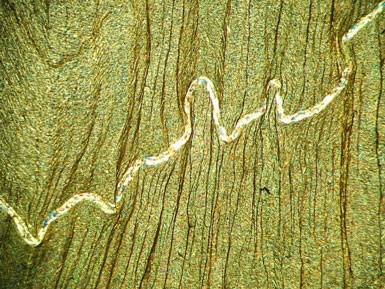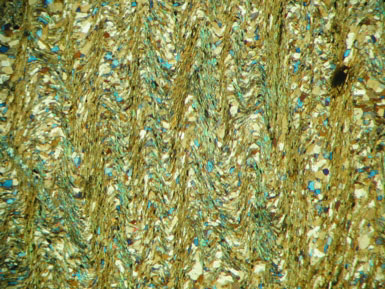| |
Foliations and Lineations |
 |
| |
During deformation, rock forming grains and minerals change their orientation and shape, giving deformed rocks organized planar and linear structures called fabrics. Planar fabrics resulting from deformation are called schistosity or foliation. Foliation results from the ductile flattening of grain aggregates (eg. quartz), and/or the change in orientation of tabular minerals (eg. micas), and/or the anisotropic growth of newly formed minerals. Often this flattening is not isotropic, ie a sphere is not flatten into a circular pancake but into an elliptic one. In this case, the foliation plane carries a linear fabric called a lineation. This lineation is due to the stretching of grain aggregates, the re-orientation of elongated minerals (eg. amphibole, rutile), and the preferential growth of newly formed minerals. The lineation corresponds to the direction of maximum stretching (X) whitin the foliation plane (XY). The pictures show how a schistosity fabric looks like on outcrop scale (bottom left), on a large thin section (top right, scale: 5 cm across), and under the microscope (bottom right, scale: 5 mm across) where the re-orientation of rocks forming minerals into crenulation micro-folds is visible. In the field, the attitude of a foliaiton plane is determined by its strike, its dip and its dip direction. |
| |
 |
 |
|